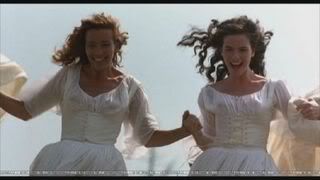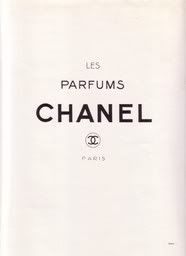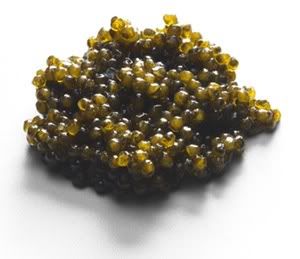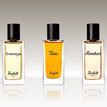
Annette Neuffer is a multi-talented lady you have not come across associated with fragrance yet. But you sure will. Not only is she an accomplished jazz musician with a quintet after her own name, performing all around the world, she has also stepped into the perilous world of perfumery using all natural essences to render her wild imaginings palpable and tangible for us.
Her generosity in sending me her labour of love was astounding and I am honoured to have been at the receiving end. To tell you the truth, I begin all those samplings with no expectations at all (since I don’t want to be prejudiced one way or another), but usually they prove very pleasant and sometimes even gripping to my surprise.
Annette’s most accomplished foray into the art of composing perfume so far is Avicenna, a sumptuous oriental of a deep ambery golden colour like a monastic liqueur. A complex and dark mix of several expensive rose essences of various origin (Bulgarian, Turkish, Russian, Moroccan), jasmine, broom, pepper, honey, sandalwood, amber, vanilla and musks.
The name alone enticed me as soon as I heard about it: Avicenna or more accurately Abu Ali al-Husain ibn Abdallah ibn Sina (born in Isfahan, the legendary city in 980AD), was the famous researcher, scientist and philosopher of Islam who was responsible for cracking the secret of rose distillation in the 10th century. Islam is a culture stepped deep into the cult of the rose. For them rose is the essence of beauty, holiness and spirituality. It appears in many facets of everyday life and plays an important part in religious ceremonies. The thick plush petals that resemble velvet hold a fascination for the denizens of the anhydrous regions of the Middle East and its heavy narcotic feel lulls the mind into a reverie.
Annette Neuffer was inspired by these historical details and strove to create something with an ancient feel to it, something that would lend some small magical touch in our everyday preparation to face the perilous world out there, a fragrant talisman for our protection.
The spicy cascade Avicenna opens with takes you by the throat and forces you to pay attention as caustic pepper singes and swirls around floral essences, perhaps a tad too stringently. Ginger and cardamom are also apprarent, while cinnamon does not make a too noticeable appearence, certainly not what you're accustomed to from its ubiquitous use in pot-pourri. The garland of rose unfolds on the skin majestically, like a thousand petals crushed underfoot in a medieval palace in Tehran. Myriads of nuances of rose take on mellow hues lent by smooth saffron and the bracken and honey feel of broom as the progression of the maturing of the precious and quite potent essence is continuing. It is very apparent that those sensations have their feet firmly in the sensual world of the material world of Nature rather than the white-coat lab of an urban conglomerate technician. There is no sharp note or that high pitched aluminium and glass feel of modern perfumes that one can smell at a department store. It’s cobbled alleys and dirt instead.
The underlying mustiness has reminded me of the famous Caron accord that is so evident in most of the venerable firm’s offerings. Their Poivre, Parfum Sacre and Rose parfums all contribute elements that can be traced later on in Avicenna.
As I inhale deeply I am transported to Top Kapi, the Constantinople palace where draperies of heavy damask hide Byzantine secrets and languorous kohl-eyed sultanas take a break from their more carnal occupations to revel in the romanticized florancy of rose and the piercing sweetness of natural jasmine in the lazy hours of a never ending afternoon.
Aromatic resins such as erotic labdanum and mellow benzoin anchor the composition with restraint so that it never becomes too sweet, as one might fear judging by the notes; although they do lend tremendous fixation and staying power to it. The final phase recalls the deep and dull colour of large amber beads threaded together in a komboloi (playing beads), one ticking the other incessantly, as time elapses lazily until all aromas on skin very, very slowly exit with a sigh.
The official notes are as follows:
Head
Black Pepper, Cinnamon Bark, Cardamom, Ginger, Macis, Mandarin, Bergamot, Tunisian Neroli
Heart
Saffron Absolute, Tunisian Orange Blossom absolute, Turkish and Bulgarian Rose Otto and absolute, Moroccan Rose Absolute, Russian Rose Absolute, Jasminum Grandiflorum Egypt, Acacia Farnesiana, Indian Tuberose, Broom Absolute
Base
Beeswax Absolute Supιrieur, Oppoponax, Elemi, Labdanum, Benzoin, Vanilla Absolute, Mysore Sandalwood, Copaiva Balsam, Hibiscus Abelmoschus
Annette Neuffer might not be as experienced as some other established perfumers, but her passion and interest in the world of natural essences is at least engaging and worth exploring for yourself.
I highly recommend you visit her Perfume Page here, where you can get info, request samples and possibly order.
You can also contact her directly at: info@naturparfum.net
Pic is of Blue Mosque in Constantinople/Istanbul courtesy of pbase.com
.jpg)












